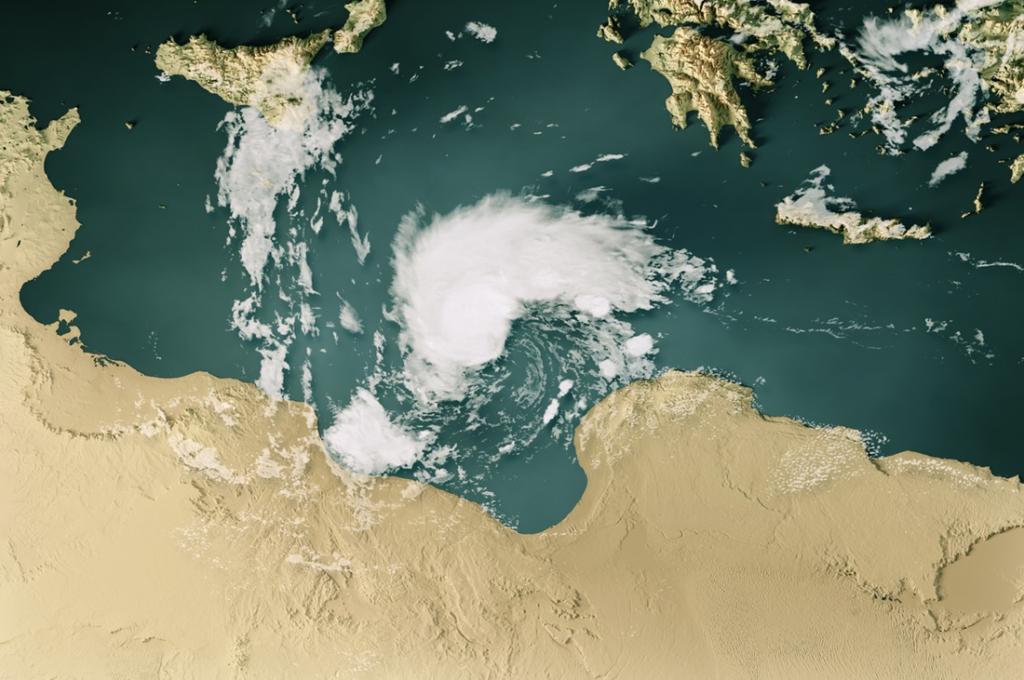

Extreme weather events hit many parts of the world in 2023, affecting water and food security as well as human welfare, report by organisation notes



Weather and climate hazards have compounded concerns over food security, population displacements, and impacts on vulnerable populations in 2023, according to the World Meteorological Organization’s (WMO) State of the Global Climate 2023.
Extreme weather events hit many parts of the world in 2023, affecting water and food security as well as human welfare. These included major floods (some of which occurred with tropical cyclones), extreme heat and drought, and associated wildfires.
“The climate crisis is the defining challenge that humanity faces and is closely intertwined with the inequality crisis — as witnessed by growing food insecurity, population displacement, and biodiversity loss,” WMO Secretary-General Celeste Saulo said in a statement.
In Asia, Tropical Cyclone Mocha, which formed in May, was one of the most intense cyclones ever observed in the Bay of Bengal. Bangladesh’s Cox’s Bazar, the world’s largest refugee settlement home to over 900,000 Rohingya refugees from Myanmar, saw the relocation of more than 29,000 people.
WMO noted that an estimated 3.4 million refugees and internally displaced people in Syria, Lebanon, Jordan, Iraq, and Egypt needed critical assistance to cope with the extreme winter conditions in 2023.
In northwestern Syria, for example, snowstorms and floods led to displacements between January and March. These people were already affected by the country’s long-running conflict.
Read
In Somalia, the ongoing drought resulted in some 531,000 displacements in 2023 in addition to 653,000 displacements primarily caused by conflict. Subsequent flooding during the October to December rainy season displaced more than a million people.
Certain extreme weather events have long-lasting impacts. The 2022 monsoon floods in Pakistan triggered the largest disaster displacement event in a decade, which continued in 2023. In June 2023, some districts experienced heavy rainfall, when displaced communities were still recovering. This resulted in waterborne and vector-borne diseases.
Migration and displacement due to climate-related shocks and stresses affect people’s livelihoods which affect various sustainable development goals (SDG).
These include poverty (SDG 1) and hunger (SDG 2), direct threats to their lives and well-being (SDG 3), widening inequality gaps (SDG 10), limited access to quality education (SDG 4), water and sanitation (SDG 6) as well as clean energy (SDG 7). Pre-existing gender and socio-economic inequalities mean women and girls are among the worst affected, impacting SDG5.
Flooding associated with Tropical Cyclone Freddy in February and March, one of the world’s longest-lived tropical cyclones, submerged extensive agricultural areas, severely damaging crops. This has exacerbated a slow economic recovery, the WMO said.
Globally, the yearly economic losses from climate and weather-related disasters have increased since the dawn of the 21st century.
Over 65 per cent of losses due to droughts occurred in the agriculture sector, including crop and livestock production losses, showed 88 post-disaster needs assessment surveys conducted in 60 countries worldwide between 2007 and 2022.
For floods, storms, and cyclones, around 20 per cent of losses were traced back to agriculture.
Further, Cyclone Mocha, together with an intensification of conflict and record-high food prices, also severely aggravated acute food insecurity, the report read.
Globally, acute food insecurity has more than doubled, from 149 million people affected before the COVID-19 pandemic to 333 million in 2023. The current global food and nutrition crisis is the largest in modern human history, the WMO report highlighted.
Libya, which was already facing a food crisis in July 2023, was hit by Storm Daniel in September. It brought heavy rainfall to the coastal and northeastern Libya, flooding nearly 3,000 hectares of cropland, particularly in the Almarj and Derna regions — the main cropland areas in the eastern part of the country and key sources of livelihoods.
“Protracted conflicts, economic downturns, and high food prices, further exacerbated by high costs of agricultural inputs driven by ongoing and widespread conflict around the world, are at the root of high global food insecurity levels,” the report read.
We are a voice to you; you have been a support to us. Together we build journalism that is independent, credible and fearless. You can further help us by making a donation. This will mean a lot for our ability to bring you news, perspectives and analysis from the ground so that we can make change together.

Comments are moderated and will be published only after the site moderator’s approval. Please use a genuine email ID and provide your name. Selected comments may also be used in the ‘Letters’ section of the Down To Earth print edition.